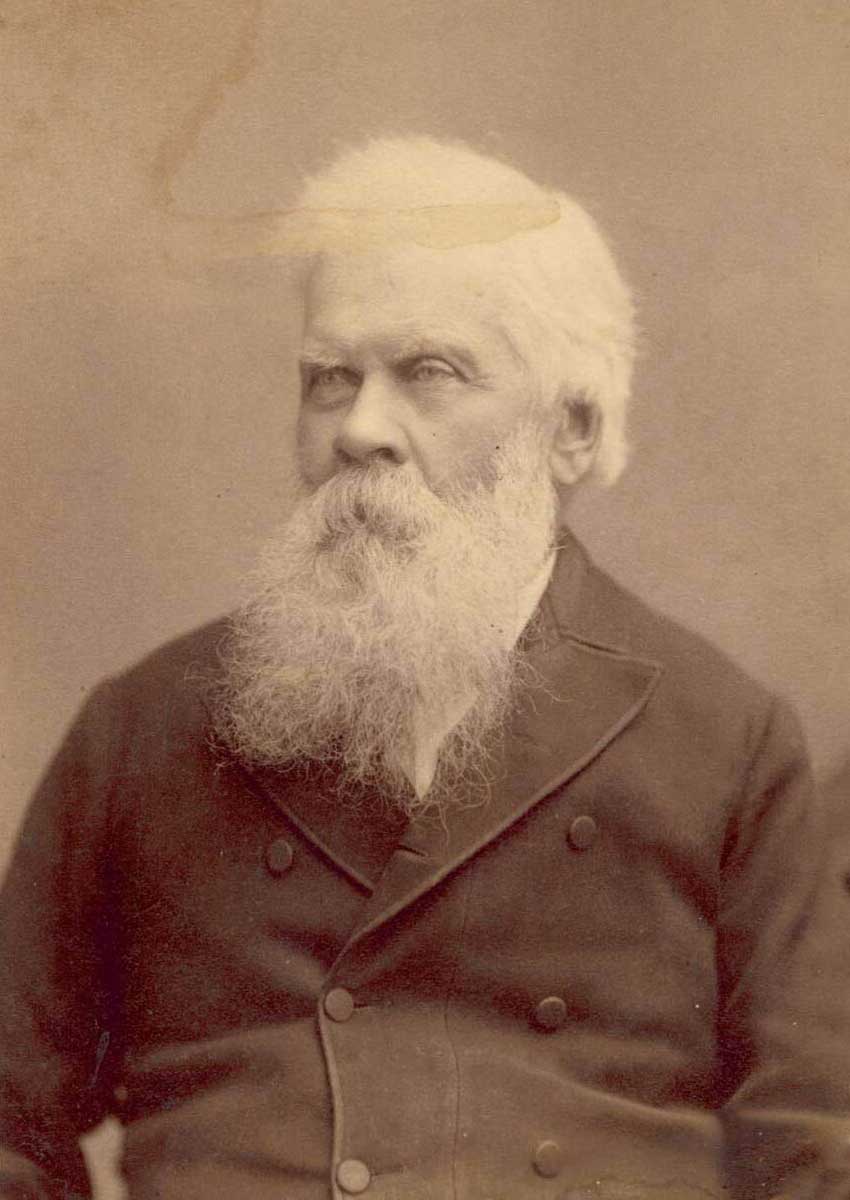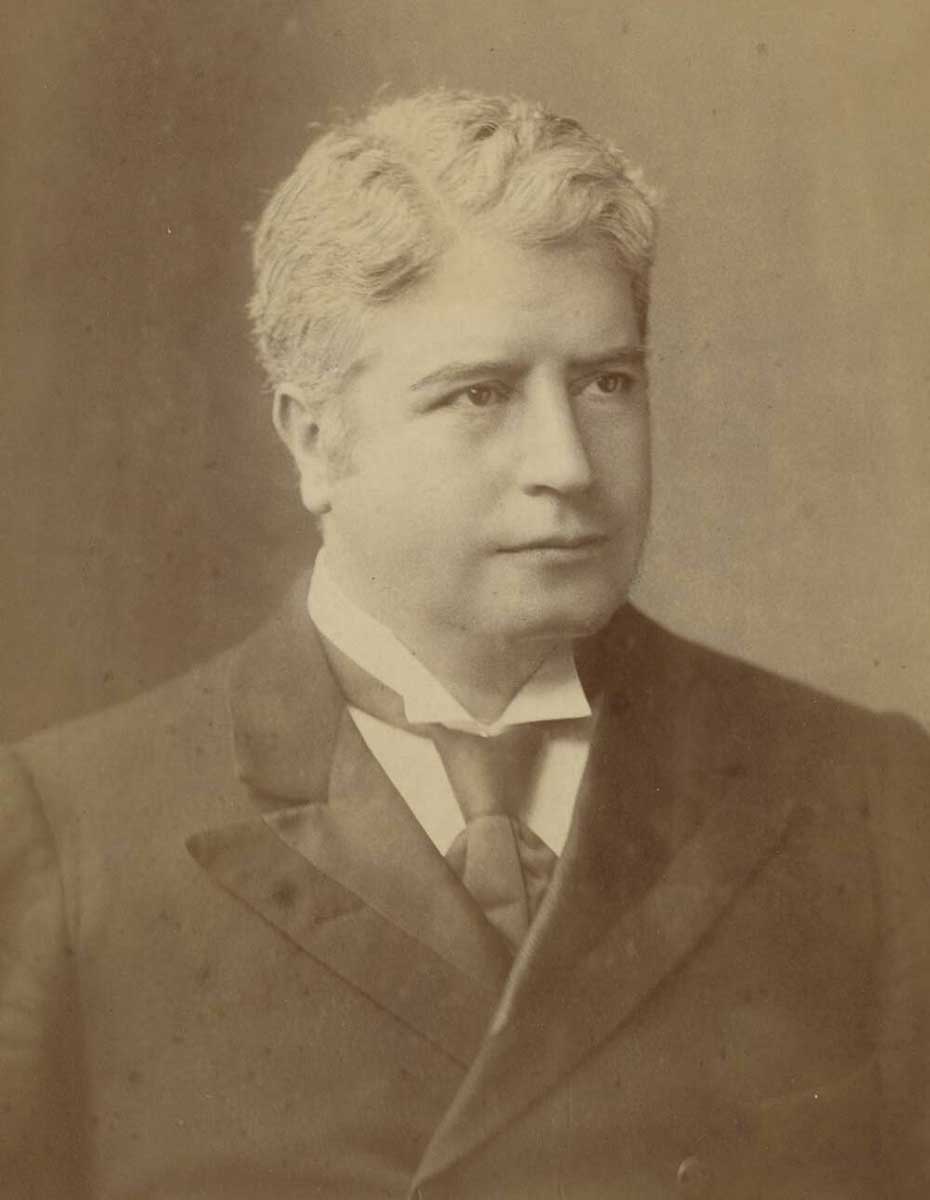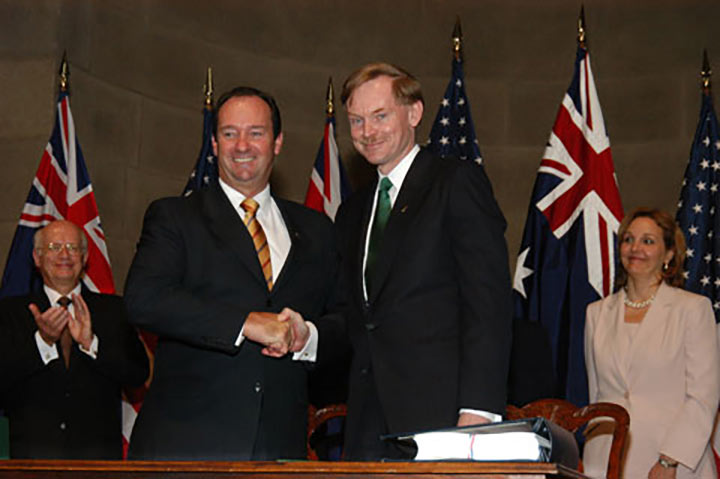In 2004, after a year of intense negotiation, Australia and the United States signed a free trade agreement.
It was only the second free trade agreement that Australia had completed (the first was with Singapore in 2003) and marked a watershed moment in Australian trade policy.
After the the US free trade agreement, Australia embarked on a series of free trade agreements with Japan, China, India, South Korea and Malaysia.
Former Prime Minister John Howard, 2015:
There was a lot of criticism by people at the time, who said that we were almost committing trade suicide by doing an agreement with a developed nation. If you fast forward to now in 2015, you can see the wisdom of Australia, and I pay tribute to the fact that this was to a large extent over time, a bipartisan acceptance, the wisdom of pursuing and building a number of free trade agreements with major trading partners of Australia.
Early Australian economy
For the first years of its existence, the colony of New South Wales was entirely dependent on imports from Europe. Slowly, local industry developed and exports began – firstly coal from Newcastle to India in 1799, then whale oil and from 1807 wool.
Policy on trade and tariffs was tightly controlled by the Colonial Office in London and it was not until 1842 that there was some devolvement of power to colonial governments.
The economy began to boom with the gold rush in the 1850s followed by rapid growth in sheep and wheat production. By the 1880s Australia was the richest country per capita in the world. However, the economy collapsed during the depression of the 1890s and trade policy became a major issue.

Free traders versus protectionists
Australia’s two most populous colonies, New South Wales and Victoria, took opposing positions on trade policy. Victoria had used tariffs to promote industrial growth while New South Wales had generally avoided them.
The issue was significant during the lead-up to Federation as the two major political parties were aligned on either side of the trade issue.
Future prime ministers Edmund Barton and Alfred Deakin were members of the Protectionist Party. While the Free Trade Party boasted Henry Parkes and Australia’s fourth prime minister George Reid among their ranks.
Under Federation tariffs between former colonies were removed, but a uniform tariff was imposed on all imports into Australia.
This was to become the nation’s major source of revenue until the federal government took sole responsibility for income tax in 1942.

High tariffs to protect Australian industry
Debate on trade and tariffs in the years immediately before and after Federation was intense but by 1905 protectionism had prevailed.
Labor lent its support to the Protectionists allowing them to form government. This marked the start of Labor’s long-term support for high tariffs.
Australia maintained a largely protectionist policy for the first half of the 20th century with high tariffs to protect local industry in the aftermath of the First World War and through the Great Depression.
The tax was set at a similar rate to other industrialised countries until the 1930s when Canada and the United States lowered their tariffs in a program of trade liberalisation.
Australia was a founding signatory of the 1947 General Agreement on Tariffs and Trade (GATT), the first global agreement to promote the lowering of trade barriers. However, in the following decades it sought exclusion from a broad reduction of tariffs on the grounds that it wanted to nurture infant manufacturing industries.
Economic change
Since 1788 Australia’s primary trading partner had been Great Britain, but this changed in the 1950s with the rise of the United States as a trading partner and then in the 1960s with Japan becoming a major importer of Australian iron ore.
In 1973 Britain joined the European Economic Community and all bilateral trade agreements between the UK and Australia had to cease. Britain’s trading focus moved from the Commonwealth to its European neighbours. Australia had to shift its trade allegiances from traditional European partners to Asia and the US.
By the 1970s some economists realised that Australia’s high-tariff environment was limiting the nation’s ability to compete in a globalising market. Major tariff reductions took place under the Whitlam government in 1973 and the Hawke government in 1991.
In the 30 years up to 2000–01 Australian trade protection of its manufacturing industries, mainly through tariffs, dropped from 35 per cent to five per cent. Australia’s protectionist paradigm was changing.
Free trade agreements
Throughout the 1990s, Australia held the orthodox view that bilateral free trade agreements (as opposed to multilateral agreements like GATT) should be negotiated by large economies with more vulnerable small and medium-sized countries.
However, with the signing of the 1994 North American Free Trade Agreement between the United States, Canada and Mexico, attitudes began to change. Theories developed that bilateral treaties could facilitate more concentrated trade between partners than multilateral agreements.
Australian interest in free trade agreements emerged during the 1996 federal election when the opposition Coalition proposed that an free trade agreement should be negotiated with the United States.
This was a response to an increasing trade deficit with the US (in other words, Australia was importing more goods from the US than we were exporting to it). The proposal also worked to differentiate Coalition trade policy from Labor’s.
Once in power, the Coalition was slow to move on bilateral trade negotiations, but the 1997 East Asian Financial Crisis created heightened regional interest in free trade agreements as a catalyst for trade creation – Singapore, New Zealand, China, Japan, South Korea and members of the Association of Southeast Asian Nations (ASEAN) all entered different forms of bilateral trade negotiations over the next five years.
In 1999 a high-level Australian taskforce was established to investigate the feasibility of an free trade agreement between Australia, New Zealand and ASEAN. Australia embarked on free trade negotiations with Singapore (November 2000) and Thailand (May 2002).
Australia United States Free Trade Agreement
In 2001 Prime Minister John Howard asked US President George W Bush to consider an free trade agreement with Australia. In 2002 President Bush agreed as long as everything was ‘on the table’.
Negotiations began in March 2003 and were completed during five rounds of discussions by February 2004. The Australia–United States Free Trade Agreement came into effect on 1 January 2005.

Defining Moment in Australian History
The Australian United States Free Trade Agreement has polarised opinion in Australia.
Critics claim that Australian negotiators failed to gain a significant share of the American market while at the same time providing significant concessions to the US on biosecurity, health policy, intellectual property and government procurement policies.
The process was further criticised for being hasty and secretive.
Advocates claim that one of the largest markets in the world was opened to Australian producers and consumers and that the agreement brought two long-term allies even closer.
The Australian American Free Trade Agreement marked a shift from Australia’s traditional focus on tariff reduction and multilateral trade agreements towards bilateral, preferential liberalisation.
The agreement became the catalyst for the Australian Government to initiate similar discussions with other major trading partners – Japan, China, India, South Korea, Malaysia and ASEAN all began negotiations with Australia over the next four years.
Explore Defining Moments
References
‘Paul Keating’s Banana Republic’ in Martin Crotty and David Andrew Roberts (eds), Turning Points in Australian History, UNSW Press, Sydney, 2009.
Simon Ville and Glen Withers (eds), The Cambridge Economic History of Australia, Cambridge University Press, Port Melbourne, 2015.
Linda Weiss, Elizabeth Thurbon and John Mathews, How to Kill a Country, UNSW Press, Sydney, 2004.